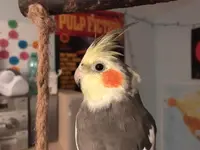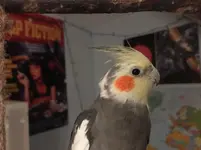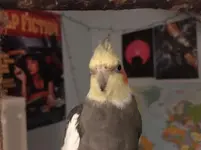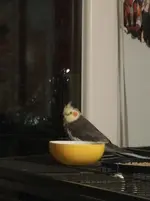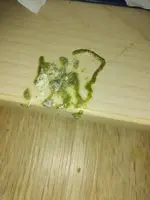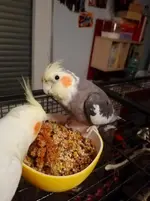It is one that is used. I have nit used it
But it is listed in vet preceeding manual
https://www.dvm360.com/view/avian-treatments-work-proceedings
Avian treatments that work (Proceedings)
April 1, 2010
Thomas N. Tully, Jr., DVM, MS, DABVP (Avian), DECZM (Avian)
There are many therapeutic options open to veterinarians when treating patients. Unfortunately, as case numbers increase treatment options are narrowed due to different reasons
Avian treatments that work (Proceedings)
April 1, 2010
Thomas N. Tully, Jr., DVM, MS, DABVP (Avian), DECZM (Avian)
There are many therapeutic options open to veterinarians when treating patients. Unfortunately, as case numbers increase treatment options are narrowed due to different reasons.
There are many therapeutic options open to veterinarians when treating patients. Unfortunately, as case numbers increase treatment options are narrowed due to different reasons. There has been a concern by the medical profession of antibiotic resistance due to the overuse and abuse of effective antibiotic agents. There are factors that determine the use of antibiotic agents, in particular for avian/exotic patients. Some of the decision making factors include effectiveness of the agent against the specific bacterial organism being treated ease of administration, stress of the patient related to administration, ability of the agent to reach therapeutic levels at the intended site of treatment, cost and availability of the drug. The best avian/exotic practices seem to use all available options, more or less, to treat with success many of their patients. This also includes using compounding pharmacies to manufacture drug formulations that are no longer mass manufactured and to compound agents into forms and tastes that are easier to administer to the avian/exotic patients. Other than compounding pharmacies, regular pharmacies may compound certain drugs they have in their inventory for a specific case or provide that drug in the manufactured form so inventory does not need to be maintained at the veterinary hospital for a drug that is rarely used. It is important to remember that just because a drug is rarely used does not mean that it is not a treatment option. The third generation cephalosporins are an excellent treatment choice for reptile patients but often patients will be treated with some other less desirable drug because the veterinary hospital does not have an inventory of these expensive drugs. Please use regular pharmacies, compounding pharmacies and hospital pharmacies when the occasion and need arises. Do not be afraid to interact with professional pharmacists. Pharmacists cannot only provide drugs but also give advice on effective alternatives, new drug therapies, side effects associated with administration and possible help formulating dosages.
A recommended test is the Exotic Animal Formulary 3rd edition edited by Dr. J.W. Carpenter, published by Elsevier/Saunders. This is a very complete avian/exotic formulary listing dosages and references. When selecting an antibiotic the veterinarian should know if it is bacteriacidal or bacteriastatic, how it is administered, if oral administration is the route of choice, how well is it absorbed through the gastrointestinal tract and disseminated through the body, species variation relating to dose and major side effects of the drug. Of course there are other considerations but if one does not apply this thought process into the selection of antibiotics and other therapeutic agents the success of treating avian/exotic patients will be greatly reduced. Below I have listed antibiotics that are commonly used in avian/exotic practice. This is not a complete selection, but one that gives an overview to the types of agents one must use to successfully treat microbial infections in avian/exotic patients. These antibiotics are not only effective in treating infections affecting avian/exotic species but other species as well.
Commonly used antibiotics in avian/exotic practice:1
1. Bacteriocidal — extended- spectrum penicillins; amoxicillin, ampicillin, carbenicillin, ticarcillin, piperacillin
2. Bacteriocidal — β-Lactamase inhibitors/clavulanic acid; amoxicillin-clavulanate, ticarcillin-clavulanate
3. Bacteriocidal — first generation cephalosporins; Cefadroxil, Cefazolin, Cephalexin, Cephalothin, Cephradine
4. Bacteriocidal — third generation cephalosporins; Cefotaxime, Ceftazidime, Ceftiofur
5. Bacteriocidal — aminoglycosides; amikacin
6. Bacteriocidal — trimethoprim-sulfa
7. Bacteriocidal — fluoroquinolones; ciprofloxacin, enronfloxacin
8. Bacteriostatic — macrolides; erythromycin, tylosin
9. Bacteriostatic — tetracyclines; chlortetracycline, doxycycline, oxytetracycline, tetracycline
10. Other (Cidal against anaerobes) — nitroimidazole; metronidazole
As mentioned previously, the above list is just a fraction of the antibiotic agents available, but are the most common used in avian/exotic pet medicine. It is useful and often recommended to use bacteriocidal agents when possible, but certain diseases respond better to agents that may be bacteriostatic (e.g. Chlamydiophila psittaci, drug of choice is doxycyline). Disease specific antibiotics also highlight the need for a proper diagnostic workup to definitively diagnose the illness in order to prescribe the correct treatment. Again, avian/exotic patients respond well to the proper treatment but die quickly if the proper treatment is not administered.
There are certain antimicrobial agents that are more effective when used to treat specific areas of infection in the body. The historical use of certain antimicrobials and their effectiveness in treating infections is an important consideration but should not overshadow the importance of culture and sensitivity, especially when treating avian/exotic patients.
Antimicrobial agents commonly used to treat bacteremia/septicemia cases include synergistic aminoglycoside and penicillin or cephalosporin therapy, enrofloxacin with amoxicillin, penicillins and for anaerobic infections chloramphenicol, clindamycin and metronidazole.1
Penicillins, cephalosporins, doxycycline, trimethoprim-sulfa, fluoroquinolones are often used to treat anaerobic soft tissue infections while clindamycin or metronidazole are used to treat anaerobic soft tissue infections.1
Respiratory tract infections are one of the most common disease presentations involving avian/exotic species. The drugs of choice for respiratory infections are penicillins, cephalosporins, tetracyclines, trimethoprim-sulfa, chloramphenicol, fluoroquinolones, doxycycline, macrolides and for anaerobic infections clindamycin or metronidazole.1 Antibiotics can be administered through nebulization techniques and nasal flushes

